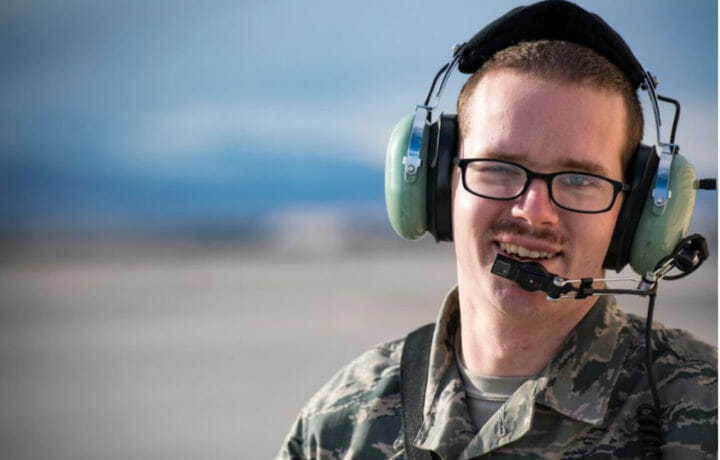Last September, the Department of the Air Force announced that it met its goals for its active-duty force for the fiscal year, but as Federal News Network reported at the time, it had to pull out all the stops to do so. More importantly, the Air National Guard and Reserve came up thousands of troops short and officials had expected that 2023 would be at least as difficult.
Rather than taking a wait-and-see approach, or hoping that recruitment goals will simply be met, the Department of the Air Force announced this month that it would examine existing policies and procedures to ensure that it is able to reflect the service members needed for the future. In the upcoming months, the Barriers to Service Cross-Functional Team, championed by Vice Chief of Staff of the Air Force Gen. David W. Allvin, will seek to address the challenges ahead.
Examining Existing Policies
The Barriers to Service Cross-Functional Team was created to rally various Department of the Air Force stakeholders, and it is now charged to research, plan, and execute these changes quickly, and cut through bureaucracy, with the modern American in mind.
It is part of the department’s commitment to recruit talented and qualified individuals while retaining experience airmen and guardians who are currently serving.
“America’s Air Force and Space Force rely on access to our nation’s extensive, geographically and demographically diverse talent,” said Alex Wagner, assistant secretary of the Air Force for Manpower and Reserve Affairs. “To remain competitive, both with the private sector and our fellow military services, we are re-examining and updating our approach to talent sourcing and management—and that requires constant review and re-evaluation of our accession policies and ensuring that any changes are consistent with those high military standards required for mission accomplishment.”
The Department of the Air Force has announced that this approach needed to become a reality when various stakeholders realized these opportunities would need supporting policy, guidance, resources, and legal authorization. Moreover, the Barriers to Service Cross-Functional Team is currently executing a comprehensive policy review to identify existing requirements that disqualify many potential Airmen and Guardians from serving and are irrelevant to warfighting.
“While we met our active-duty recruiting goals last year, record-low unemployment rates and steadily declining familiarity with the U.S. military today leaves us uncertain whether we can achieve our goals this year,” said Maj. Gen. Ed Thomas, Air Force Recruiting Service commander. “We are starting to see some positive results of our training program, policy changes and our enhanced marketing efforts, but military recruiting will remain a long-term challenge.”
Inked Recruits
One area that is already being updated is regarding tattoos, and the Department of the Air Force is following changes by the U.S. Army and U.S. Navy, which each updated their respective policies last year. Previously any visible tattoo was a disqualifier for the Army, but as of last year, the service relaxed the rules considerably; while the Navy updated its policy in 2016 that allowed tattoos anywhere on the body except the head, face, or scalp – and even allowed tattoos on the hands.
The Air Force previously had only permitted ring tattoos, although they were limited to a single band on one hand, yet, due to the increased prevalence of hand and neck tattoos among America’s youth, the policy is being updated.
Neck tattoos will also now be allowed; provided these don’t exceed an inch, and they must be behind a vertical line at the opening of the ear orifice around the back to a vertical line at the opening of the other ear orifice – while hand, arm, leg, neck, and ring tattoos can be exposed and visible while wearing any uniform combination.
However, chest and back tattoos cannot be visible through any uniform combination or visible while wearing an open-collar uniform.
The Space Force had begun allowing neck tattoos last May but still didn’t allow hand tattoos. The new policy will allow them under the same restrictions.
In addition, the Department of the Air Force’s new policy was still clear that tattoos or other markings anywhere on the body that are obscene, commonly associated with gangs, extremist, and/or supremacist organizations, or that advocate sexual, racial, ethnic, or religious discrimination are prohibited in and out of uniform.
Challenges Will Remain
It isn’t just the ink on the skin that could be a problem for would-be recruits. A Pentagon study from last year found that 77% of young Americans wouldn’t qualify for military service without a waiver due to being overweight, past drug use, or having mental and physical health problems.
The Department of the Air Force has announced that it will look to address other policies that include accelerating naturalization at Basic Military Training, reinstating the Enlisted College Loan Repayment Program, add additional funds to Initial Enlistment Bonuses, while it is now realigning its Accession Body Fat Composition Standard with OSD Guidance.
The other services will likely face issues meeting recruitment goals, yet all the stops are still being pulled out, and that could include digging into their respective pools of delayed entry program recruits.
Last month, U.S. Army Secretary Christine Wormuth pledged to recruit 65,000 new enlistees – and that could be a tall order.
“The number one priority, in my mind, for this year…is fixing our recruiting problem,” Wormuth said during a discussion at George Washington University, hosted by the Project for Media and National Security. “The Army missed its recruiting target last year by about 15,000 people. That is a very serious situation for us.”




